So, you’ve decided to book a trip to Hawaii? First time? Let's make it happen!
This guide cuts through the noise, focusing on the practicalities of planning your first trip to Hawaii. We'll walk you through booking flights, choosing the right island(s), and finding budget-friendly accommodation, so you can focus on the fun: volcanoes, beaches, and island vibes.
Setting the stage
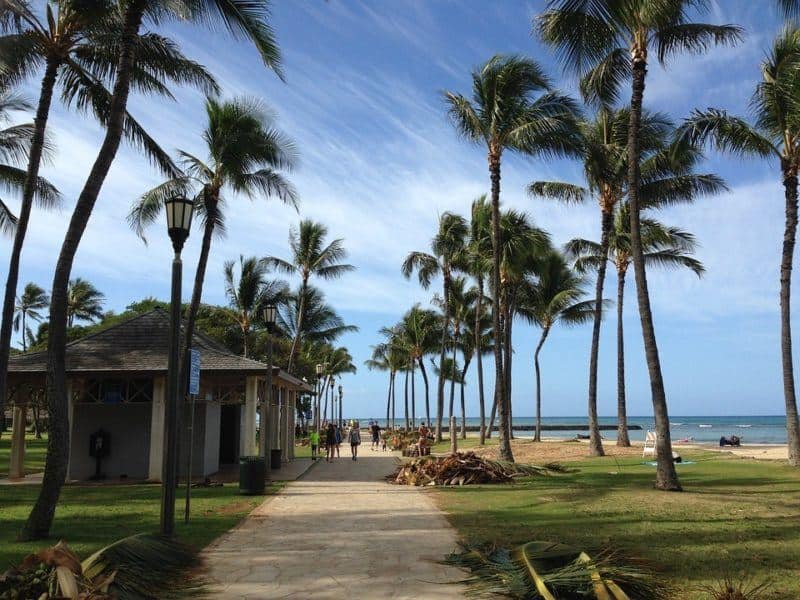
1. Figure out your Hawaii vacation budget
This first-time Hawaii vacation planner starts with your budget. You already know that you'll need to pay for more than just airfare and accommodation. You'll also need funds for activities, dining, and transportation, not to mention a buffer for souvenirs and assorted unexpected expenses.
Here's a rough idea of how much it would cost to spend a week in Oahu during shoulder season. We've broken it into three price points: Budget, Mid-Range, and Luxury.
Remember, these are estimates. A lot depends on your destination, travel dates, and whether you use the cost-cutting ideas that we've included in this article.
Accommodation:
- Budget: $150/night per couple. Look for vacation rentals, hostels, or budget-friendly hotels outside the main Waikiki strip.
- Mid-Range: $250/night per couple. Consider moderately priced hotels with good amenities or vacation rentals in quieter areas.
- Luxury: $400/night per couple. Splurge on beachfront resorts, oceanfront suites, or private villas.
Activities:
- Budget: $50/day per couple. Focus on free or low-cost activities like hiking, snorkeling, visiting cultural sites, and picnicking on the beach.
- Mid-Range: $75/day per couple. Include paid activities like surfing lessons, boat tours, museum visits, and luau shows.
- Luxury: $150/day per couple. Go for private helicopter tours, dolphin encounters, scuba diving trips, and high-end spa treatments.
Food:
- Budget: $75/day per couple. Opt for casual dining, food trucks, grocery store picnics, and self-catering in your accommodation.
- Mid-Range: $100/day per couple. Enjoy a mix of casual and sit-down meals, exploring local restaurants and farmer's markets.
- Luxury: $150/day per couple. Indulge in fine dining experiences, romantic beachside dinners, and chef-curated meals.
Transportation:
- Budget: $30/day per couple. Utilize public transportation (buses) and rely on walking or biking for short distances.
- Mid-Range: $40/day per couple. Rent bikes for some days and occasionally use taxis or ride-sharing services.
- Luxury: $50/day per couple. Rent a car for the week or hire a private driver for day trips or special occasions.
Other Expenses:
- Tipping: Generally 15-20% of restaurant bills, tour guides, and taxi fares. Budget around $10/day.
- Extras: Unexpected expenses happen! Allocate 10% of your total budget for things like souvenirs and miscellaeous costs.
Total Budget:
- Budget: $3,885 for the week, or $555/day
- Mid-Range: $5,950 for the week, or $850/day
- Luxury: $9,450 for the week, or $1,350/day
2. Choose when to travel
When is the best time to visit Hawaii? That depends on your priorities. Let's explore the ideal times to travel, considering weather, budget, and crowds.
The best time to visit Hawaii for good weather
June, July, and August have the best weather. You'll have minimal rain and perfect beach conditions. There will also be more people and higher prices.
The shoulder seasons (March-May) have good weather. Expect warm days and slightly lower costs. If you travel then, make sure your Hawaii packing list includes a rain jacket.
The cheapest time of year to visit Hawaii
It costs a lot to go to Hawaii. And if you go during a busy time, like Christmas or Spring Break, it might cost you even more.
The best time to visit Hawaii for budget travelers is during the shoulder season (after Easter through May and September through November). You’ll find better deals on accommodation and flights during these months, and flying mid-week can save you even more money.
When is Hawaii least crowded?
The quietest months in Hawaii for tourism are typically May, and September (after Labor Day) through November (excluding Thanksgiving). These are the best months for visitors who want to avoid large crowds and seek a more tranquil experience.
Best Time to Visit Hawaii Chart
| Factor | Peak Season (June-August) | Shoulder Season (April-May & Sept-Nov) | Low Season (November-March) |
|---|---|---|---|
| Weather | Hot, sunny | Pleasant | Cool, rainy |
| Prices | Highest | Moderate | Lowest |
| Crowds | Most | Less | Least |
| Surfing | Good swells for experienced surfers | Smaller swells good for beginners | Biggest swells ideal for experienced surfers |
| Whale Watching | Rare | Excellent |
ⓘ TLDR: If you’re looking for a balance between crowds, pricing, and weather, visiting Hawaii in April/May or between Labor Day and Thanksgiving (the shoulder season) is a great bet.
3. Decide how many days you will spend in Hawaii
In our opinion, it's not worth going to Hawaii for just a few days. To begin with, the shortest nonstop flight to Hawaii from Los Angeles (LAX) takes approximately 5.5 hours and will be even longer from anywhere else. Not to mention, your body will also have to deal with the time change. Trust us: Jet lag is no fun.
If you want your vacation to Hawaii to be worthwhile, you should plan to spend at least a week there. That should be enough time to enjoy the attractions and culture … assuming you're only visiting one island.
If your Hawaii itinerary includes multiple islands, you'll need two weeks or more. You'll lose half a day of sightseeing time while you change hotels and fly there, so plan accordingly.
See our 7 Day Oahu itinerary for many more tips.
4. Select the Hawaiian island you want to visit
Hawaii has eight main islands and six of them are tourist destinations. Every island has its own unique vibe and culture that you may experience firsthand.
TLDR: Everybody has their own opinion on which Hawaiian island is the best. But most visitors decide between Maui vs. the Big Island for a first Hawaii visit.
Not sure which Hawaiian island to choose? The first thing you need to do is to figure out what your priorities are. Then, do some research on what the various islands have to offer so you can tailor your first-time trip to Hawaii to your interests.
But don't go crazy. As fun as it might sound, island hopping isn't the best use of your holiday time. Staying on one island not only streamlines your itinerary but also saves on transportation costs.
| TRAVEL STYLE | OAHU | MAUI | HAWAII | KAUAI | LANAI | MOLOKAI |
|---|---|---|---|---|---|---|
| Adventure & Ecotourism | ✓ | ✓ | ✓ | |||
| Beaches | ✓ | ✓ | ✓ | ✓ | ✓ | ✓ |
| Culture | ✓ | ✓ | ✓ | ✓ | ||
| Diving & Snorkeling | ✓ | ✓ | ✓ | |||
| Escape | ✓ | ✓ | ||||
| Family | ✓ | ✓ | ✓ | |||
| Food | ✓ | ✓ | ||||
| Golf & Spa | ✓ | ✓ | ✓ | ✓ | ||
| Honeymoon/Relaxation | ✓ | |||||
| Nightlife | ✓ | |||||
| Shopping | ✓ | ✓ |
ⓘ According to The Hawaii Vacation Guide, Oahu and the Big Island (Hawaii) are the most affordable islands. Maui is one of the most expensive.
Booking the essentials
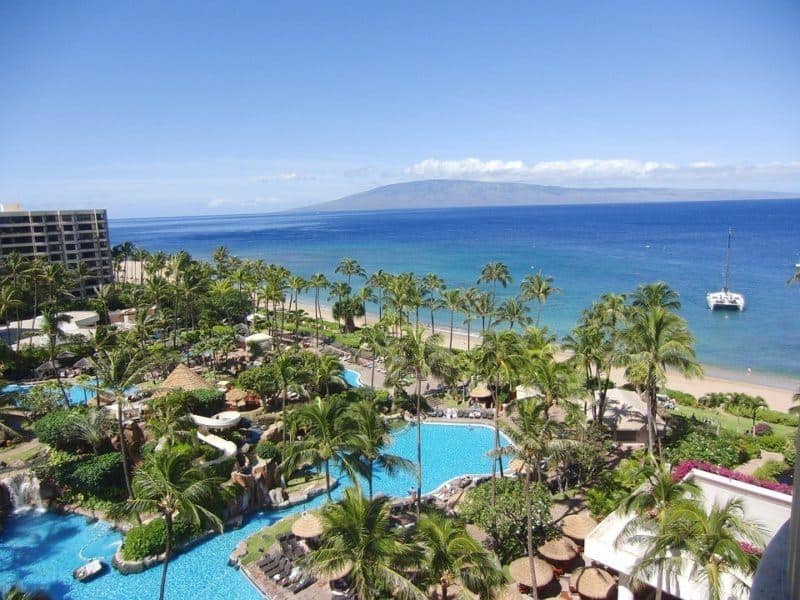
ⓘ SUPER IMPORTANT TIP: It is not uncommon for popular attractions, airlines, and hotels to be completely booked up, especially during peak travel times. Make reservations well in advance to avoid being disappointed.
5. Book your flights
Now that you know when you're going and how long you'll be there, it's time to book your flight. But booking a flight to Hawaii involves more than finding the cheapest ticket. Baggage fees, transfers, and seat preference cost extra on many airlines, so you'll need to factor those into the price.
You can researches prices on flight aggregators like Skyscanner, Google Flights, and CheapOair. They save you time and money by searching the web for the most advantageous airline schedules and prices. You can also set up price alerts so you'll be notified if there are any price drops.
To save even more money, check out the airfare on different days of the week to see how prices change. More often than not, fares will be cheaper mid-week.
Flying from a nearby airport can also save you money. For example, there are different prices for flights to Hawaii from the three main airports in the Greater New York City Area.
Interesting fact: The three U.S. cities with the lowest airfares to Honolulu are Oakland, Los Angeles, and Seattle.
6. Choose where to stay
No matter what your budget is, Hawaii has countless accommodation options for you to choose from. You'll find everything from beach bungalows to luxury resorts, rental homes, hotels, and more.
Staying beachfront offers stunning views and instant access to the ocean, but the tradeoff is that it's often more expensive. If being on the water isn't important to you, book something that's a few blocks inland. Those accommodations can be more affordable and offer a quieter experience.
ⓘ BOOKING TIP: You can search for resorts and hotels on Booking and vacation rentals on Vrbo.
The price tag isn't the whole story, though. Taxes bite in Hawaii (up to 18%!), and hotels often tack on resort fees for Wi-Fi, pools, or gym access. Rental condos might surprise you with cleaning charges, and parking is another cost to consider. Read the fine print before you book that beachfront dream.
We always read other guests' reviews to get an idea of how they liked the place. Look for more recent feedback to get a more accurate picture of what your stay might be like.
7. Plan how you'll get around the island
The first thing you'll need to figure out is how to get from the airport to your lodging. If you're renting a car or your hotel offers a shuttle service, you're set.
If not, your options are to hail a cab, use an app like Uber or Lyft, or book an airport transfer service like Kiwitaxi. Go for the transfer service if you want the most convenient option. There's something to be said for knowing that your driver will be waiting for you inside the airport, holding a sign with your name on it.
As to how to get around the island during your week in Hawaii, that depends on your budget and how much you plan to do. Yes, you can rely on public transportation, but the full Hawaiian experience requires a car.
We've had good experiences with Discover Cars and highly recommend them. Just keep in mind that rental cars are in high demand in Hawaii. You'll need to book yours ASAP to ensure you will get the vehicle you want.
If you don't want to drive, public buses offer a budget-friendly way to get around on Oahu, Maui, Kauai, and the Big Island. Taxis or ride-sharing apps like Holoholo, Lyft, and Uber are a faster, more flexible option. Just be warned: Finding a cab or rideshare to take you back to your hotel from a remote area can be a major challenge.
There are no public buses on Lanai or Molokai, but there are cabs and shuttles that can take you around. We recommend renting a 4WD on Lanai. With 400 miles of unpaved roads, the island begs for off-road adventures. You can also use a 4WD vehicle on Molokai, though taxis and shuttles should be fine for most journeys.
8. Buy travel insurance
In just the last few years, Hawaii has experienced cyclones, fires, and volcanic eruptions. Think about all the people who had to cancel their trips and didn't get their money back!
This is one place where investing in travel insurance is worth it. There's nothing like having peace of mind for unexpected situations. Policy coverage can include trip cancellations, medical emergencies, and lost belongings, too.
You can compare policies from providers like Ekta and World Nomads to find the one that aligns best with your needs and travel plans.
Planning your adventures
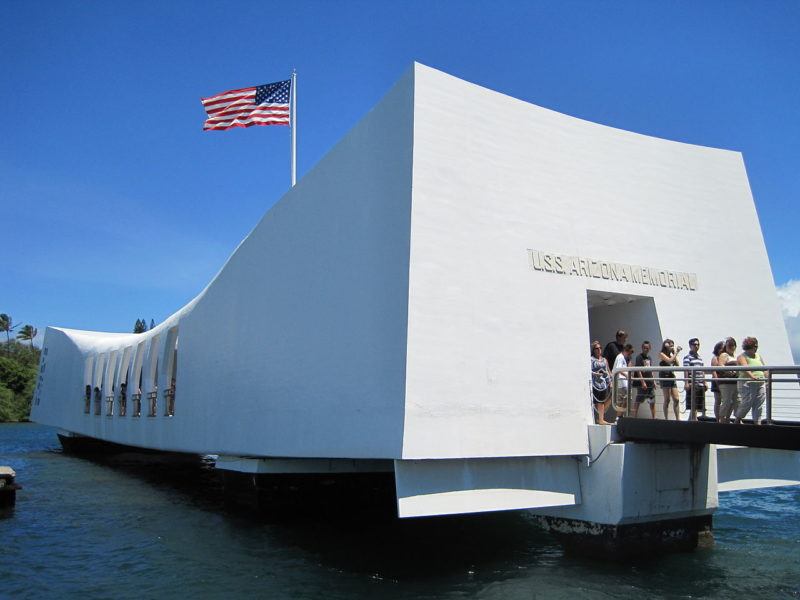
9. Create an itinerary
Crafting a well-balanced itinerary is key to maximizing your Hawaiian experience. Consider dedicating certain days to exploring local attractions, mixing in some relaxation on the beaches, and leaving room for spontaneous discoveries.
Check out our Maui and Oahu articles for plenty of itinerary ideas. They will help you prioritize activities that align with your interests, whether it's hiking to scenic viewpoints, snorkeling in crystal-clear waters, or indulging in local cuisine.
Also, a travel guide like this one will give you lots more ideas than we can cover in any article.
10. Choose your activities and excursions
Whichever island you choose, rest assured that there are plenty of free things to do, as well as tours and activities that will make your vacation truly memorable.
Research and book activities and excursions in advance to secure your spot. Whether it's a snorkeling tour, a scenic helicopter ride, or a traditional Hawaiian luau, having a plan in place ensures you won't miss out on popular experiences. Check cancellation policies in case of any unexpected changes to your schedule.
Most local companies have good tours on offer. You can find many of them listed on Viator and Get Your Guide.
ⓘ TIP: If you plan to stay on Oahu, be sure to read our 7 Day Oahu Itinerary next.
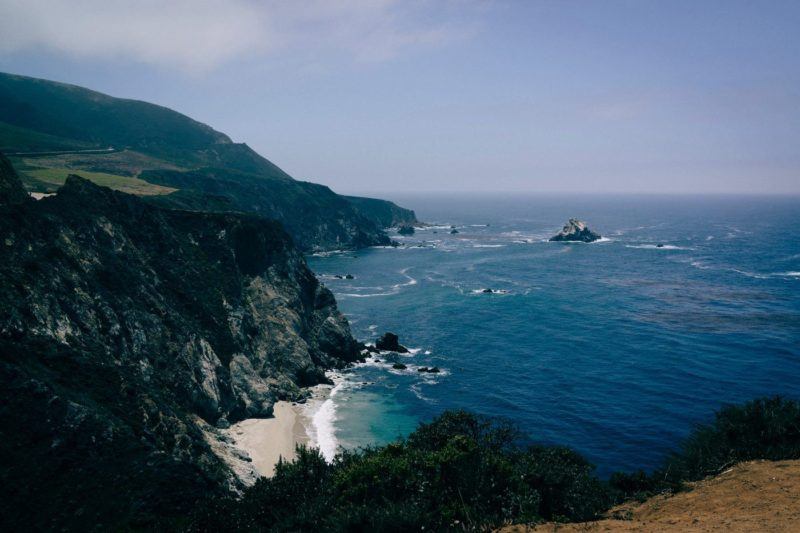
Frequently asked questions about visiting Hawaii for the first time
How long is the flight to Hawaii?
Flight time from the mainland US to Hawaii depends on your departing city. As a rule of thumb, it will take 6 hours to fly to Hawaii from the west coast, 8 to 10 hours from the midwest, and approximately 11 to 12 hours from the east coast. The fastest flight to Hawaii from United States takes 5h 35m (San Francisco to Kahului).
What’s the time difference?
Hawaii is in Hawaii Standard Time (HST), which is 3 hours behind Pacific Standard Time (PST) and 6 hours behind Eastern Standard Time (EST).
How many islands are in the Hawaiian Island chain?
The Hawaiian Island chain includes 137 islands, atolls, and islets. There are 8 main islands (the Big Island, Maui, Kahoʻolawe, Lānaʻi, Molokaʻi, Oʻahu, Kauaʻi, and Niʻihau).
How many islands in Hawaii are inhabited?
Only seven of Hawaii's islands are inhabited: the Big Island, Maui, Lānaʻi, Molokaʻi, Oʻahu, Kauaʻi, and Ni'ihau. However, Ni'ihau is privately owned and used for raising livestock. The eighth main island, Kaho'olawe, is uninhabited and off-limits. The U.S. military once used it as target practice and it has unexploded artillery shells.
When is whale season in Hawaii?
Whale season in Hawaii varies depending on the species, but generally runs from November to May. Humpback whales are the most common, arriving in November and staying until May.
In conclusion
We hope we've helped you out! Planning your first trip to Hawaii might feel a bit overwhelming, but you can do it! Trust us: With the right mindset and preparation, it can turn into a truly unforgettable experience. So, get ready to have an amazing time!
We really hope you'll fully immerse yourself in the rich culture and stunning nature of Hawaii! Don't be afraid to try new things like the delicious local cuisine and exciting adventure activities. More importantly, don't forget to savor every single moment of your trip!
Inspired? Pin this post and share it with your friends!
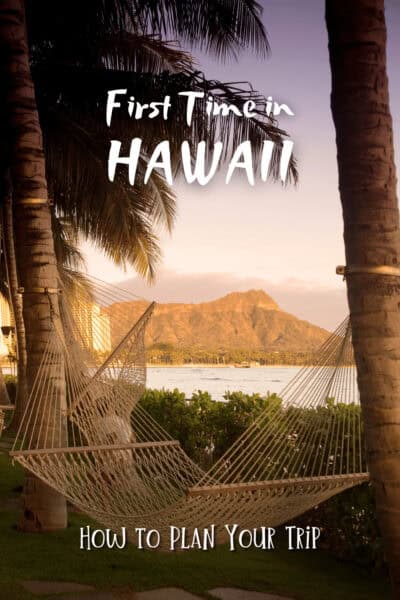

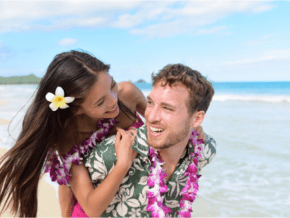
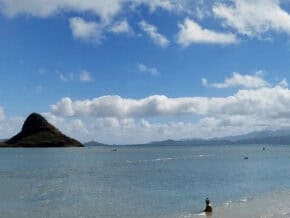
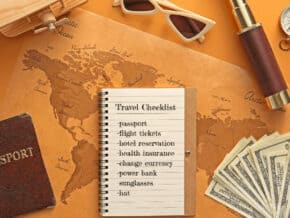
On our adventure to every state capitol in America, we are saving Hawaii for last. It poses a problem though, that I never thought of. Each island is separate and it isn’t easy to hop between them. I think we will end up visiting the capitol first, then taking a plane to the big island to see the volcano’s. Originally I thought you could just hop on a cheap ferry or something, but apparently the only way is to either charter a boat or fly.
We like your idea of beginning in Honolulu. There’s a third option too, if your budget allows – take one of the Hawaii cruises that stop at various islands. You would only need to unpack once, plus all your transportation, lodging and most food would be included.
Such a wonderful information. It’s really a very good blog.
What a beautiful place! Thank you for your sharing!
You’re welcome.
Do you have any suggestion on a budget place to stay on Maui?
Perhaps another reader has a budget hotel they can recommend. A lot of hotels offer excellent promos, but they frequently change. We like to start our hotel searches on Hotels Combined and Booking.com.
Thanks Linda! I think we’ll check out your hotel combined suggestions first. Can’t wait to go to Maui. 🙂
Glad we could help. I hope you have a wonderful time. 🙂
Linda I am so wanting to get to Hawaii so thank you for some suggestions on how to plan our trip.
You’re so welcome! We just found out that AirAsia has plans to fly to Hawaii, so I hope this post will help a lot of people.